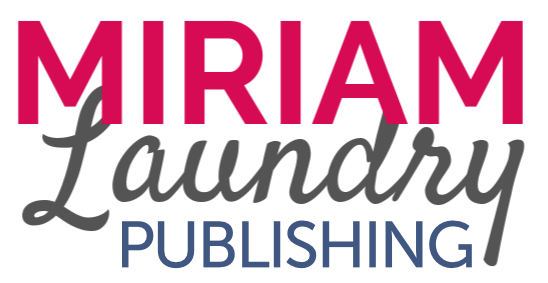In every area of life, it's often said that the first step is the hardest to take. However, once that step is taken, it initiates progress, and progress is what inevitably leads to achievement.
Deciding to write a children’s book marks the beginning of your journey, and finishing the first draft is the crucial progress needed to achieve your goal of becoming a published author. So, how do you get there?
Many aspiring authors struggle to complete their first draft simply because they feel overwhelmed by the pressure to make it 'perfect.' But remember, it’s called a 'first' draft for a reason! In this article, I’ll share practical tips on how to complete the first draft of your children’s book with confidence and ease—because writing a story that children will love should be a fun experience. Once you finally hold that finished draft in your hands, nothing will compare to that feeling of accomplishment—knowing you’re one step closer to seeing your book on the shelf.
Focus on This Step (And This Step Only!)
The first draft is the foundation of your book becoming a reality, yet so many writers get distracted by the other elements that make up the final product: editing, illustrating, publishing, to name a few. It’s important to focus on the task at hand—writing your story. After all, you can’t do any of the other steps without a story to tell. Remind yourself often that this step has to be completed to move forward.
Perfectionism Comes Later
There’s a saying that goes, “You can always fix bad pages. You can't fix no pages.” In the beginning, if you try to perfect every word or sentence you write, you are unintentionally hindering your creative process. Your first draft isn’t going to be your final draft—mastering the story comes later during the editing phase. Now is the time to have fun with your story. Let your imagination run wild and free. Go into the writing process with the mentality that this isn’t set in stone and you’ll be amazed at what your creativity comes up with.
Try the Free Writing Technique
Have you ever had a lot on your mind at once that it’s crippled you from knowing where to start or what to do next? Have you ever grabbed a notepad or went to the notes app on your phone to jot down everything that’s on your mind so you can find a way to organize your thoughts into a cohesive plan? (Moms, you know what I’m talking about!) You can take a similar approach when writing the first draft of your children’s book!
Free writing is what worked for me when writing all 5 of my books. When I gave myself permission to write freely without censorship, my pen could barely keep up with my thoughts. Sometimes, getting all your ideas out onto paper (or into a Word document) is what brings the clarity you need. It creates the mental space to think freely. By doing this, the story you’re meant to share will naturally reveal itself.
When The Ideas Strike, Don’t Wait
Whenever a new idea or angle for your story comes to mind, write it down immediately without hesitation. We’ve all had those 3 a.m. thoughts that seemed too brilliant to forget, only to wake up and not remember.
When creativity strikes, you have to follow it. Even if the idea doesn’t make it into your final story, getting into this habit is a powerful ideation technique. Take the necessary steps to honor your imagination by writing down what it tells you. With this approach, you might just discover several new story ideas!
Set Deadlines or Make a Schedule
Deadlines are essential for completing your first draft. They keep you accountable and help overcome the intimidation of the blank page. By committing to your deadlines, you’re building both confidence and discipline within yourself. Trust me, there is power in keeping promises to yourself.
If you’re aiming to write a picture book in one week, I’ve created a schedule that has helped hundreds of aspiring authors reach their goals. Here’s how it breaks down:
- Day 1: Identify your reason for writing.
- Day 2: Decide on the message of your story.
- Day 3: Create your main character.
- Day 4: Present a problem for your character to solve.
- Day 5: Develop the story's roadblocks or checkpoints.
- Day 6: Choose a satisfying ending.
- Day 7: Craft your story.
For more daily guidance on this schedule, this post gives you the steps on how to write a picture book in one week.
Follow a Trusted Blueprint
If there’s one thing I’m deeply passionate about, it’s helping aspiring authors publish their stories and inspire more children. To make outlining your story even easier, I developed what I like to call The Children's Book Blueprint. It’s a free, step-by-step guide designed to help you craft a compelling narrative—the perfect resource for when you're writing your first draft!
This blueprint provides a clear formula and offers guidance on how to navigate each step of the process:
- Define your story’s message
- Identify the problem your character will face to learn that message
- Outline the solution
- Map out three key events that guide your character from problem to resolution
With this blueprint in hand, you’ll have a reliable framework to shape your story with confidence and clarity in no time. Don’t miss out—grab your free copy here!
Celebrate Progress
Lastly, don’t forget to celebrate your progress. Writing a children’s book is such an amazing achievement. It takes true courage and your ideas are worthy of celebrating! By trusting your creativity and expressing gratitude as you develop your story, you’re intentionally cultivating a mindset that nurtures even more creativity.
Once you’ve completed your first draft, come to my next available training. This session will provide clarity on the next crucial step—how to edit your story to ensure it’s one that young readers will love.
